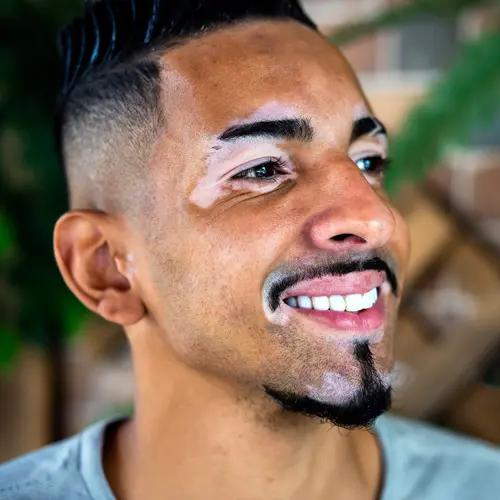Lichen nitidus is a rare skin condition that causes clusters of bumps on the skin. The bumps appear spontaneously, without an obvious cause. It is not contagious.
The clusters of bumps can show up on multiple spots on your body. They usually don't hurt, but they may itch. Since the bumps can appear on your face, you may feel embarrassed or uncomfortable about how your skin looks. Lichen nitidus goes away on its own after some time. There are a few treatments that may help speed up recovery.
Symptoms of Lichen Nitidus
The main symptom of lichen nitidus is clusters of small, raised bumps on your skin. It may look like other types of rashes, but it has some distinctive characteristics, such as:
Appearance. The bumps are very small, seldom bigger than the size of a pinhead. The bumps are round and flat-topped. The bumps will be close to the color of your skin. They feel solid and are not filled with fluid. On people with dark skin, the bumps may appear lighter than the surrounding skin. People with light color skin might notice a dark or reddish tint to the bumps.
Location. The most common spots of the body for lichen nitidus eruptions are the chest, abdomen, arms, buttocks, and genitals. In rare cases, they will appear on your palms, soles of your feet, or fingernails. Lichen nitidus may clear up on one part of your body but then appear on another. You may find that clusters of bumps appear on the skin where you have a minor injury like a scratch. They may erupt in places where there is pressure on your skin, crease of skin on your elbow or wrist, or in skin folds on your abdomen.
Discomfort. There is not usually any discomfort associated with lichen nitidus. Some people experience itching, which can range from mild to intense. If lichen nitidus affects your fingernails, it can cause deep ridges in the nail that eventually grow out.
Causes of Lichen Nitidus
Doctors aren't sure what causes lichen nitidus. It's an inflammatory reaction, but the trigger isn't clear. Some experts think it might be connected to an underlying immune condition in some people, but there isn't any definitive research on the issue. Occasionally, people with lichen nitidus have other conditions, such as vitiligo, atopic dermatitis, or erythema nodosum. There is no confirmed connection between those conditions.
Lichen nitidus is more common in children and young adults, but it can happen at any age. Men and boys get lichen nitidus more often than women or girls do. It is also slightly more common among Black people in the US.
Lichen nitidus isn't infectious, so there is no risk that you will pass it along to other people. Developing lichen nitidus does not put you at increased risk for other skin conditions, such as skin cancer.
If you suspect you have lichen nitidus, you should talk to your doctor to confirm the diagnosis. Your doctor will do an exam and ask you questions about your health. They may also take a biopsy of the bumps on your skin to rule out other skin conditions.
Diagnosing and Treating Lichen Nitidus
Lichen nitidus will eventually clear up without treatment. If it causes itching or discomfort or if the look of the bumps bothers you, you can ask your doctor about treatment. There are several options that may clear your skin up more quickly.
Corticosteroids. Over-the-counter steroid creams may help with itching. You can also ask your doctor for prescription-strength creams or an oral steroid. Steroids may reduce inflammation and minimize the appearance of the bumps.
Retinoid creams.Retinoids are a commonly-used treatment for various skin conditions inducing acne, psoriasis, and as an anti-aging ingredient. They speed the turnover of skin cells and improve the appearance of skin. Retinoids may help reduce outbreaks of lichen nitidus.
Antihistamines. Antihistamines can help with itching or discomfort from lichen nitidus.
Phototherapy. You may benefit from UVA or UVB light therapy, where your doctor exposes your skin to special lights. The treatment is helpful for lichen nitidus and other skin conditions such as psoriasis because it speeds cell turnover. It is safe for people of any age, but you should limit sun exposure after phototherapy. You need to go to a doctor's office several times for a complete course of treatment.
If you don't treat lichen nitidus, it will usually clear up within several months or up to a year. It doesn't leave scars or other skin damage, so there are no lingering effects once it's gone. It is not associated with an increased risk of other health conditions.
If you have questions about lichen nitidus, talk to your doctor.

